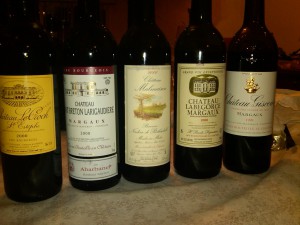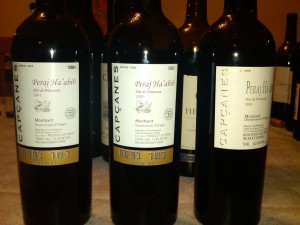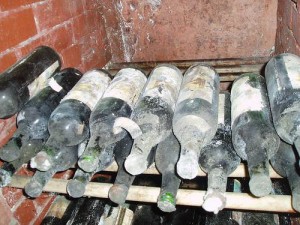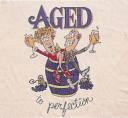I had one of my most enjoyable tastings a few days ago. I got to taste about 20 wines ranging in age from 7-11 years old, all stored in optimal conditions. I knew which wines I would be tasting ahead of time and was concerned that many would be past their prime and possibly even dead. Lo & behold, the wines were all alive and quite spectacular.
It is said that 95% (or thereabout) of wine in consumed within 24 hours of its being purchased. Which leads me to believe that most people have not had the extreme pleasure of drinking a wine that has had time to mature in the bottle, a bottle aged wine.
From “The Billionaire’s Vinegar”: “Crudely, the molecular changes known to unfold in a sealed wine bottle that has been laid down for years involve the gradual interaction of oxygen and wine. Simple chemical compounds break down and recombine into more and more complex forms called polymeric phenols. Acidity and alcohol soften. The largest compounds – the harsh, astringent tannins – drift down into a carpet of sediment, taking with them the saturated, inky pigments. They leave behind a mellowed, unfathomably subtle flavor and a brick-red hue. Everything knits together, resolving into an ever finer complexity expressed fragrantly in the wine’s bouquet.”
The chapter gets into more detail about mature wine (while discussing Bordeaux purported to be from Thomas Jefferson’s cache dating back to the late 1700’s, and declares that “a wine is considered mature when it has maximized its flavor possibilities but has not yet begun to deteriorate”.
I still believe that beauty is in the eye of the beholder. Some people prefer the primary aromas and flavors of a young wine, while others prefer the tertiary characteristics. Of the wines I tried at the tasting I was shocked to discover that not only were most of the wines alive, but they were still displaying youthful fruit. Their color was almost across the board still ruby, not showing very much (if any) of the brick color that is indicative of an aged wine (as it goes from purple to ruby to brick and ultimately towards brown as it reaches the end of its life).
I tried 5 Bordeaux, 3 Spanish wines, 2 wines from California and 9 wines from Israel.
The Bordeaux was all quite nice and I wish I had time with each bottle to enjoy it as it evolved. Sadly this was a bit of a speed tasting for me as my job on this evening was simply to verify that the wines were still alive. They were alive yet I couldn’t help but think they all seemed a bit lite. They were definitely light in body. I wonder what types of characteristics would have been revealed had I had more time with these wines.
Next were the Spanish wines from Capcanes; A 2000, 2001 & 2003. These were probably my (more…)






